November 2022



“Ambition is the path to success. Persistence is the vehicle you arrive in.” Bill Bradley
Patience, persistence and perspiration make an unbeatable combination for success.
Napoleon Hill





“Ambition is the path to success. Persistence is the vehicle you arrive in.” Bill Bradley
Patience, persistence and perspiration make an unbeatable combination for success.

Sundaramoorthy S writes about how RBAC and SoD play a key role in enforcing Compliance and Governance in the field of Robotics and AI. –
“Robotics & AI is vital for industries to evolve, handle the shortage of resources and bring in the efficiency in the process and delivery. While we focus on bringing in the operational excellence, the use of Robotics & AI should not be harmful to humans.”
Akansha Paliwal throws light on the importance of ‘Data-driven’ capabilities and how can such a model be created in banks and financial enterprises to stay relevant. – “With the pandemic and changing consumer expectations being the driving factors, banks and other financial institutions are now challenged to deliver hyperpersonalized, digital-first services.”
Rajeswari S highlights how AR and VR technology is aiding the healthcare industry. – “According to Forbes report of Jul 2022, AR and VR market in healthcare is poised to reach nearly $9.7 billion in worth in the next 5 years. Many healthcare companies have already started capitalizing on this technology.”
Pramod M shares his insights on how existing literature and research on employee motivation and behavior can be adopted into a model and reduce attrition. – “The first and foremost is identifying employee pain points, this will work wonders because if the root cause is known it becomes easy to find the solution. The employees will open up once they believe the process is unbiased, transparent and fair.”
Akshayaa S explains how various stressors need to be managed at the very beginning to avoid getting affected by stress. – “More than the causes, the way in which one reacts to a stressor determines the way one gets to manage it.”
Artificial Intelligence (AI) assists us with various things in our lives, at home and at work. How does AI assisting us in recruiting talent sound like? This is a reality in the US and other countries like South Korea. Recruiters have been employing AI to detect/determine emotions in candidates during video interviews. The AI is said to help assess the competency and fitment of the candidates for the roles being interviewed for. By reading micro-expressions and other non-verbal cues, these AI tools claim to have a deeper understanding of the candidates. And these assessments definitely impact the hiring decisions.
Given the vast range of human emotions, and the innumerable ways that they are expressed, it’s difficult to accurately estimate a person’s thoughts through their emotions. Moreover, the underlying science of emotions is still developing. In fact, there are still multiple theories about whether emotions can be distinguished discretely or fall on a continuum.
Another area of concern is discrimination. Face recognition tech is already controversial. Medical conditions or physical impairments can lower the accuracy of an attempt to read a person’s emotions. AI models are known to have imbibed biases against people of color. All these concerns raise a question mark on the reliability of such AI models’ predictions.
Emotional AI is part of ‘Affective Computing’ and even experts agree that it is not advanced enough to be commercialized. Emotion recognition involves far more than just looking at someone’s face. It can also involve observing body posture, gait, and other characteristics, as well as using biometric sensors and audio to gather more holistic data. But much of this nuance gets lost when emotion recognition research is used to make commercial applications.
Banning the use of such technology may not be possible or feasible. However, it must be backed by solid scientific research and must be regulated. It is important for all to understand and accept the limitations of such technology. It will be in the best interest of all to tread with caution in matters which involve relying on new technology to make decisions that affect the future of people.
We have some insightful articles lined up in this edition.

Sundaramoorthy S has written, Enforcing RBAC/SoD Mandates for Robotics & Artificial Intelligence. Akansha Paliwal has written, Building the Data-Driven Banking and Financial Enterprise.

Rajeswari S has written, AR/VR: Progressive Pace of the Tech World. Pramod M has written 3-step Model to reduce Workplace Attrition.
Akshayaa S has written, Understanding Stress.
Happy Reading!

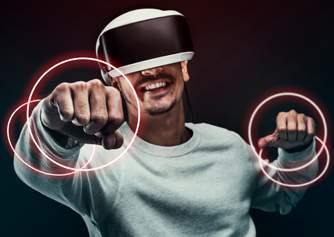
An odor machine, so-called olfactometer, makes it possible to smell in VR environments. The new technology that can be printed on 3D printers has been developed in collaboration between Stockholm University and Malmö University. In the game, the participant moves in a virtual wine cellar, picking up virtual wine glasses containing different types of wine, guessing the aromas.

The key to maximizing traditional or quantum computing speeds lies in our ability to understand how electrons behave in solids, and researchers have now captured electron movement in attoseconds-the fastest speed yet. Seeing electrons move in increments of one quintillionth of a second could help push processing speeds up to a billion times faster than what is currently possible.

Researchers at MIT demonstrated a magnet-based system that can track the location of muscles and could be used to help people control prosthetic limbs and other wearable robotic devices.
Researchers at MIT and the MIT-IBM Watson AI Lab developed a new technique enables on-device training of machine-learning models on edge devices like microcontrollers, which have very limited memory. This could allow edge devices to continually learn from new data, eliminating data privacy issues, while enabling user customization.


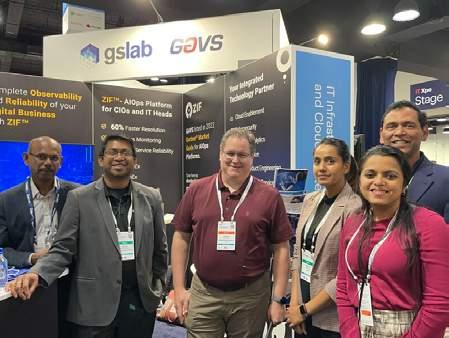

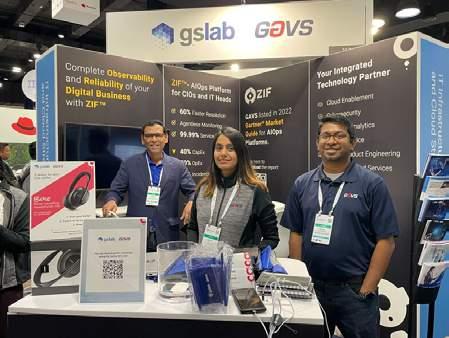
































In the present age, we need to accept the fact the Robotics & AI are unavoidable. While we leverage the services from Robotics and AI, we need to ensure that those are not operated illegally and harmfully to humans, In this article, I will elaborate how we could ensure Robotics and AI is tuned to effectively perform intended tasks only and also more importantly for not doing the unintentional tasks.


Before we deep dive on how we could control Robots & AI effectively, and only for doing the intentional and legal activities which are programmed to them, let’s have few statistics on Robots and AI.
Below infographics shows the size of the market for industrial robots worldwide from 2018 to 2022, with a forecast through 2028 (in billion U.S. dollars) -
Source: https://www.statista.com
 Sundaramoorthy S
Sundaramoorthy S
The AI software market’s global annual revenue is currently over $50 billion.
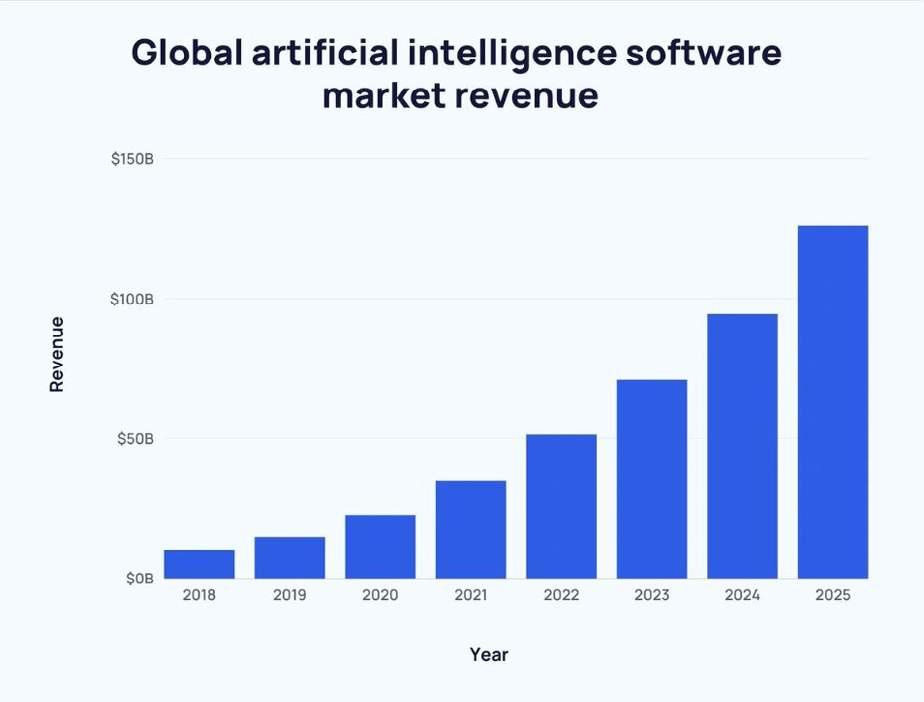
Source: https://explodingtopics.com
Following are some of the industries that leverage robots
1. In Healthcare for Robotic surgeries
2. In Military – for transportation, search, rescue, and attack
3. In Food industry for processing the foods
As Robots are used in Surgeries, Military and food processing, probability of the Risk percentage is not Zero for sure. Considering even 1% of failure in surgery, military and food processing could be of big in impact and numbers, which is high RISK.
Role Based Access Control (RBAC) and Segregation of Duties (SoD) play a key role in enforcing Compliance and Governance in the field of Robotics. When RBAC and SoD is implemented for Robotic
devices, the RISK and the threat surfaces are defended to a greater extend. Following are few scenarios of Robots being operated illegally -
1. Remotely controlled for illegal operations
2. Programming Robots for unexpected behaviours
3. Unauthorized access to Robots for executions
Implementation of Segregation of Duties to Robots and AI clearly give the directions to them on what the devices should do, most importantly what they should not do.
Robotic devices should not be operated remotely for the activities which are illegal in the operating surface. SoD polices will have to ensure, even if the instructions are coming from remote, that devices should have a capability to ensure they are cross checking the polices, rules and instructions which are configured to them locally. It is an imperative for the robotics & AI industry to have a global and local regulatory body which approves the usage of devices based on the operating environment after a complete
review from the experts. The body should review that the devices are build and configured so that it could not be operated illegally by the hackers.
Proactive and Reactive intelligence to devices should be incorporated so that they are functioning as per the instructions given by the legal authorized operators. This will ensure that the toxic combination of duties will not be done by the devices even if the commands are coming from the external threat. The administrators who handle the robotic devices should go through the RBAC process which will ensure access violations are restricted.
1. Robots may be hazardous to humans when they malfunction or designed to work illegally. Robotics used in surgeries pose high risk if they malfunction.
2. Robots will not react to dynamic situations due to lack of intelligence
3. AI uses pre-fed data to give solutions
Need of Robotics & AI is vital for industries to evolve, handle the shortage of resources and bring in the efficiency in the process and delivery. While we focus on bringing in the operational excellence, the use of Robotics & AI should not be harmful to humans.
Sundar has more than 13 years of experience in IT, IT security, IDAM, PAM and MDM project and products. He is interested in developing innovative mobile applications which saves time and money. He is also a travel enthusiast.
 Akansha Paliwal
Akansha Paliwal

The banking and financial services sector is in the middle of major digitalization that is radically transforming the way its services are offered and experienced. With the pandemic and changing consumer expectations being the driving factors, banks and other financial institutions are now challenged to deliver hyper-personalized, digitalfirst services. Such services enable fast, engaging, interactive experiences, and are centered around datadriven processes. Personalized customer experiences require a delicate balance of human engagement and digital intervention and are powered by data and AI. According to a research from Juniper, the number of global mobile banking users is expected to surpass 3.6 billion by 2024. Consequently, financial institutions are investing in digital advancement to remain competitive.
Although banks have no shortage of data, the problem is the lack of a defined approach to leverage the data available to meet business goals, while remaining relevant and compliant. There is an increasing demand for data analytics that fuels data driven decision making to bring in all-around process efficiencies. Advanced analytics powered by AI/ ML ushers in proactive business models through predictive and prescriptive intelligence.
A customer’s digital footprint is a goldmine. Every customer with a digital presence leaves behind traces of their personal information that can be leveraged to create new products or improve existing services. For instance, banks can use a customer’s digital journey to trace their purchase patterns and recommend financial products. Data available through related third-party sources also paves the way for financial service institutions to explore new avenues of client servicing.
Using analytics in a customer lifecycle helps with customer identification and acquisition, relationship management, cross-selling, customer retention, value enhancement, and overall customer wallet share. Banks must use advanced analytics for personalized marketing, lifetime value prediction, and custom recommendation workflows to meet end goals that lead to customer success stories.
Banks adopting data & analytics solutions have been able to digitize customer experiences, enhance customer relationships, increase revenue, and improve security. Data analytics also plays a primary role in fraud detection and risk management that is key to the BFSI sector. It helps identify and evaluate customers by analyzing their account behavior and payment trends, detecting deviations from the norm, etc. Similarly, risk modeling is an important application for data analytics. When done correctly, it helps banks reduce their portfolio risks and improve overall performance. Data analytics also helps with credit risk analysis for loan approvals. This is performed by analyzing customer credit scores and behavior patterns.
The use of AI in creating a data-centric business is becoming increasingly dominant. AI allows the bank to gain real-time customer insight that can be used for customer segmentation and predictive servicing. This consistent increase in the use of AI technology is directly associated with its application across functional areas such as risk management, compliance, fraud detection, customer lifecycle, and more.
While banks have a large repository of data, they are currently underutilized. For instance, banks trying to identify customer behavior can no longer rely on simple business insights based on data from one channel such as in-person interactions. Customers
are increasingly moving towards digital banking and omni channel interactions. To ensure that the investment and commitment to data analytics are properly met, and capitalized on, enterprises must first focus on creating a robust data strategy. A datadriven enterprise must have four important things — the unwavering support of the senior management, a comprehensive data strategy, a strong analytics team, a tailored analytics solution, and clear identification of areas to apply these tools. Given below are some high-level steps to achieve the same:
■ Have a clearly defined data strategy with measurable milestones and ensure its feasibility
■ Define the value it needs to create and identify areas that can be used to deliver that value
■ Identify the areas for digital transformation to support the data strategy
■ Design the relevant data architecture and identify technical support required
■ Since data quality is key, create a robust data governance model with clear accountability
■ Establish central governance for the digitalization journey
■ Drive data literacy by training employees and stakeholders in the new business models
With our Data and Analytics Services, GS Lab | GAVS will transform your organization into an insightsdriven business to deliver enhanced customer experiences, better prediction models, improved profitability margins, and effective financial and regulatory reporting.
To learn more, please visit https://www.gavstech.com/banking-financialservices/
Akansha is part of Solutions & Strategy team at GAVS. She has 4+ years of work experience focused on presales, market research and analysis and sales enablement. She is responsible for enabling and supporting BFS deals as part of Solutions and Strategy group.

Augmented reality (AR) technology is an enhanced version of the real world that is achieved using digital visual elements, sound, or other sensory stimuli and delivered via technology. It combines the real world and computer-generated content. The technologies used behind AR are Multimedia, 3D-Modelling, Realtime Tracking and Registration, Intelligent Interaction, Sensing and more.
The augmented reality (AR) and virtual reality (VR) market size is expected to grow by USD 162.71 billion, progressing a CAGR of 46 % from 2020 to 2025, according to Technavio’s latest market report. Key consumer countries of AR/VR are US, China, Japan, Germany, and UK.
A quick example to relate would be that the AR technology lets consumers try out digital versions of a furniture directly in their own home!

AR got a lot of attention in 2016 when the game Pokémon Go made it possible to interact with Pokémon superimposed on the world via a smartphone screen.
AR incorporates three features:
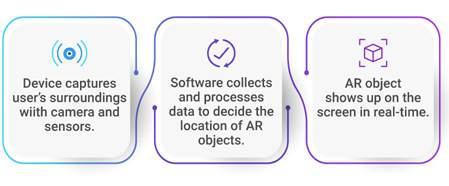
• a combination of digital and physical worlds, • interactions made in real time,
• accurate 3D identification of virtual and real objects
AR projections are displayed on various screens, glasses, handheld devices, smartphones, and headsets.
Virtual reality (VR) is a technology that simulates vision to end up with a 3D environment in which a user appears to be immersed while browsing through it or experiencing it. The 3D environment is then controlled in all 3D by the user.

Virtual Reality comprises four primary elements:
• virtual world,
• immersion,
• sensory feedback,
• interactivity.
The image explains how a user is immersed in car driving using virtual reality head-mounted display steering wheel.
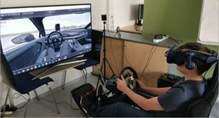 Rajeswari S
Rajeswari S
AR/VR are prevalent in almost all the industries now
- Automotive, Retail, Tourism, Real Estate, Interior Designing, and so on.
Well…not really. Here are some of the key differences between the two technologies:
• VR creates a virtual environment before you, where you can interact with the elements in that environment. AR enhances the view of the real world with an overlay of digital elements.
• In case of virtual reality, your screen becomes your world whereas in case of augmented reality, your real world becomes your screen.
• VR provides you 75% virtual experience, while AR is only 25% virtual.
• You require a headset to view the VR environment, while it is not necessary for AR.
• VR users are completely immersed in the fictional world, while AR users are still in contact with the real world.
• AR requires higher bandwidth than VR.
• AR enhances the virtual world and the real world. VR replaces the real world with a fictional reality.
According to Forbes report of Jul 2022, AR and VR market in healthcare is poised to reach nearly $9.7 billion in worth in the next 5 years. Many healthcare companies have already started capitalizing on this technology.

To start with, AR and VR supports the root of healthcare – medical training. Medical students are trained with the help of AR/VR to practice medicine via simulations. The technology allows simulated surgical procedures and imitates the exact moves during surgery with your hands. Since medical students are well acquainted with the human anatomy in their education phase, they can handle surgeries more confidently which in turn significantly reduces the risk of complications during the surgeries.
Medical students using VR can now explore accurate and real human anatomy including the cardiovascular and central nervous system, muscles, and bones in a completely immersive environment.
As we speak about the various industries AR/VR cater to, we cannot leave Healthcare out of it. Their contribution to healthcare is immense. AR/VR is used extensively in day-to-day surgeries, prognosis, and other procedures. It enables safe and progressive technology for practitioners and patients. AR/VR is paving the way for digitization of healthcare, and presents valuable opportunities for application for payers, healthcare professionals and providers, and medical devices.
AR/VR helps doctors comprehend the medical situation covering every minute detail to catch errors in the diagnosis. AR/VR helps doctors capture early signs of any underlying disease. In case of complicated or new medical conditions, AR/VR provide great opportunity for practitioners to experiment on virtual human bodies which help them to treat the condition successfully. During surgeries, surgeons can view the patient vitals by wearing AR-enabled head-mounted device through simulation without the need to gather data from elsewhere. So, procedures can be much safer than before, which helps in bringing down the mortality rate.
• Robotic surgery – Controlled through a virtual reality parallel system as a digital twin, the robot can accurately image a patient through ultrasound without the hand cramping or radiation exposure that hinder human operators.
• Post-traumatic stress treatment – When patients are placed into the environment with a traumatic situation, it helps them find a solution and overcome the crisis.
• Anxiety, phobia, and depression treatment – Patients can use VR for meditations or relaxation in safe environments provided by VR.
• Personalized approach to patients – VR and AR helps doctors to educate patients on the treatment plan and better explain the preoperative details in a simulated view. This goes a long way in providing an anxiety-free encounter for the patient.
Augmented reality can save lives by showing defibrillators nearby. In case of emergencies, AR/VR applications can save lives. The AED4EU app, created by Lucien Engelen from the Radboud University Nijmegen Medical Centre, Netherlands, helps its users to add places where automated external defibrillators (AEDs) are available nearby. The key part—physicians can access the database through the application. Moreover, with the Layar browser, users can project the exact location of the nearest AEDs on the screen of their phone, and it would take a minute to find them and help those in need. Augmented reality brings crucial pieces of information to those in need or danger.
1. Improved patient experience: Simulation of events can help better understand the patterns of disorders and develop more effective treatment strategies. AR/VR helps treat specific medical conditions such as anxiety, various kinds of phobias, and addictions. They also help in Post-
Traumatic Stress Disorders.
2. Realistic experience & better care: AR and VR give the most realistic impression of how the human body is built and how it functions; hence, provide a high level of immersion for the medical professionals.
3. High Scalability: AR/VR can be used anywhere providing high opportunity for mentors/experts to connect and consult anywhere in real-time.
4. Low risk and high safety: Training in AR/VR as compared with practicing on real patients involves much less risk for the patient
5. Cost-effectiveness: Cost of AR apps is relatively low in comparison with the cost of setting up anatomy theatres and providing cadavers and specimens for students to practice. Additionally, VR simulators provide low-cost opportunity for reproducible training under various environments and difficulty levels.
6. Higher efficiency: AR/VR guarantee high level of efficiency as tablets, mobile phones, AR glasses, and other optimized devices are employed as hardware for running AR applications.
Mixed Reality (MR) is already the next phase of AR/ VR. It helps you manipulate both physical and virtual items and environments using next generation sensing and imaging technologies. MR provides the user a hybrid experience that involves both physical and virtual elements. Mixed reality can immerse you in both real world and an imaginary place, giving you a unique experience.
• Humans won’t need prescription glasses anymore. The AR system corrects vision for you, tracking your eye movement and focal point.
• AR and VR could converge as new glasses and bring on darkness by cancelling light waves, much like noise-canceling headphones do.
• In 2025, we’ll wear “smart contact lenses” that will gradually evolve to full AR functionality.

• Last but not the least, if AI & AR meet, AI powers facial and spatial recognition software needed for AR to function. AR and AI solutions can work together to provide innovative solutions.
Let’s gear-up for an enthralling technology-immersed future!
• https://imaginovation.net/blog/ar-in-healthcareuse-cases/
• https://www.impelsys.com/blog/the-role-of-ar-vrtechnology-in-the-health-industry/
• https://www.softwaretestinghelp.com/what-isvirtual-reality/
• https://www.resco.net/blog/what-is-augmentedreality-and-how-does-ar-work/
• https://theappsolutions.com/blog/development/ ar-vr-in-healthcare/
• https://www.financialexpress.com/
Rajeswari is part of the Presales team at GAVS. She has been involved in technical and creative content development for the past 15 years. She is passionate about learning new technologies, gardening, music and writing. She spends her free time watching movies or going for a highway drive.

Post pandemic, there has been a significant shift in hiring process for the most valued asset of any organization - ‘Human Resources’. The market for prospect hires is like never before and firms are competing against each other to secure top talent. Industry-wide attrition has reached record high levels (20%) in Q1, 2023 with Infosys and TCS reporting attrition of 28.4% and 19.7% respectively (source: economictimes.com). This yielded in the rise of the lateral hires with salary hikes of 40-50% and in some specific cases with a hike of 100%. For instance, a resource with 2-3 years of experience with a specific skill whose paycheck is close to INR 5-6 lakhs is offered a whopping INR 12-15 lakh.

However, everybody assumes that the motivation for employees to hop firms is fat paychecks, but the answer is a big NO. Pay is only one of several parameters. As organizations evolve, working cultures unified and global competition intensified, different perspectives and different models for understanding motivation at work is required. Let’s take a deep dive to ingest the various factors that motivate employees and various models which I would prefer based on their applicability to current context.
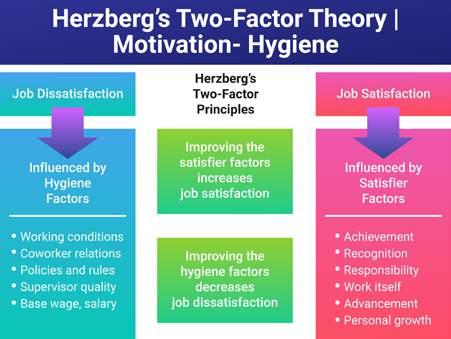
Frederick Herzberg’s theory of motivation proposes a two-factor theory basis in which a distinction be made between satisfied vis-à-vis dissatisfied employees at work. The presence of ‘Motivators’ make employee satisfied and presence of ‘Hygiene Factors’ makes them less dissatisfied. It’s very important to note that “If employees are not satisfied that does not mean they are dissatisfied and vice-versa”.
Basis his research, Herzberg clearly identifies the factors that comes under each category. For instance, he recognizes that absence of good salary makes employee dissatisfied but presence of it may not necessarily make him/her satisfied. Similarly, presence of personal growth plan makes employee satisfied but absence of it may not necessarily make them dissatisfied. In a nutshell, for employee to perform in the organization with the desired outcome, both the hygiene factors and motivation factors need to be considered but the difference is - one happens at organization level and other at functional/project level.
If an organization feels there is heavy attrition in a project, then there has to be a dissection at both organization and project level. For example, a longtenured resource quitting within 3-4 months of his/ her deployment in a new project means there is a serious motivation factor and that should be solved at project level, giving him/her the necessary ‘Satisfier factors’. In the same way, if attrition is constant in every project, then there must be a ‘hygiene factor’ that needs to be considered at an organization level which refers to change in HR policies, working hours, working conditions et al. Therefore, fusion of hygiene and satisfier factors makes an employee stick to an organization for longer periods.
Pramod MExpectancy theory states that the performance is proportional to the expected outcome provided the outcome is well-defined as perceived. The model is based on four basic points concerning human motivation. Those points are as follows:
1. People have preferences among the various outcomes that are potentially available to them.
2. People have expectancies about the likelihood that an action (effort) on their part will lead to the intended behavior or performance.
3. People have expectancies (instrumentalities) about the likelihood that certain outcomes will follow their behavior.
4. In any situation, the actions a person chooses to take are determined by the expectancies and the preferences that person has at the time.
Porter and Lawler said that motivation is affected by 1. the individual’s ability to perform the task and 2. their perception of the task
So, if the reward is not in line with the expectation the motivation level falls and vice versa (assuming the right task is allotted to an employee basis his/her ability).
The first and foremost is identifying employee pain points, this will work wonders because if the root cause is known it becomes easy to find the solution. The employees will open up once they believe the process is unbiased, transparent and fair. To induce that, a session with a neutral arbitrator should be conducted through workshops followed by questionnaire/survey.
Second, on the top of that evaluate Herzberg factors and try to pin-point if the change is needed at the organizational level or project level and take steps to remediate.

Third, apply Expectancy theory and sit with the employees in that project to understand their abilities and satisfy them. It is utmost important that the first two steps are followed before the third step as it would have created trust and belief inside the minds of employees that employers are valuing them.
So, to conclude, employees don’t always quit because of the big paychecks, they do so because of many reasons as stated above. They would have made up their minds long back to quit and waited for the right opportunity which presented itself later. So, instead of blaming the pandemic or the competitors, following a scientific process makes an organization a happy workplace for all the employees.
Pramod is an MBA professional with an overall experience of around 17 years in Aerospace, IT and Education verticals. He has 8+ years of post MBA experience as an edupreneur in Ed-tech space focusing on incepting and developing a MVP (Minimum Viable Product).
3-step model to reduce employee attrition
Stress has always been an important area to be addressed among the adult population. Every single person would have experienced it at some or the other point in their life. For some people it could be in the form of deadlines, for some as unachievable targets, for some as emotional overload or disturbing thoughts and so on. Something that feels stressful for a few people might not feel the same for others. Depending upon one’s exposure and capabilities, it differs from one person to another. No matter how big or small the stressor is, it needs to be attended then and there to have a healthy mind and body.
stressed. What matters more than one’s way of reacting to a stressor is the part from where it is triggered. The core root causes of stress involve certain areas in ourselves that we are not dealing with properly. It could be our emotions or thoughts or behavior/habits.
Most people perceive stress as a negative factor. Stress need not always be harmful. Sometimes it also helps in achieving the targets, gives motivation for task completion, to act quickly, etc. Only when the intensity of stress is more than the manageable level or if it is frequently occurring, does it become harmful in nature. Also, stress is more impactful when it is ignored frequently. It is always easier to deal with it if we happen to notice it at the initial stages.




More than the causes, the way in which one reacts to a stressor determines the way one gets to manage it. There are people who work to resolve everything when stressed out. There are a few who get stuck without being able to do anything at all. There are some who relax and work things out once they get back to their right state of mind. A few also get themselves or others into trouble while being
When emotions are frequently not attended to, it creates a lot of disturbances in oneself making them more susceptible to stress. So, understanding how we feel and managing it is important. Though thoughts are often automatically created from our past patterns, we can still take control of it whenever we want. If we practice focusing more on positive thoughts, eventually the level of stress that we take inside our mind will also largely get reduced.
Third, are our behavior and routines. The interactions and relationships we have with people around us, our time management abilities and our lifestyle play a great role in the strain we take on our mind. Also, knowing our capacity matters a lot. When we take on a lot on our plates, be it personal or professional, it might cause a lot of stress from different angles. Having said that, another major factor that plays a role in creating stress is the expectations we have of ourselves and people around us. Many times, we disappoint ourselves when our expectations are not aligned with our outcomes. Tuning the direction in which we make efforts, tunes our expectations towards different people around. Further realigning
our expectations in a realistic manner helps to reduce disappointments and the stress caused because of it.
Problems need not even exist for the stress to be stimulated. A lot of people experience stress even when there is a lack of growth or improvement in some part of their life. Especially for people whose basic needs are met, they automatically start to look out for growth and development. Working on some form of growth which might be in the relationship or career or self or financial is also needed to avoid additional stress in life. Hence, stress management is not merely managing the stimulated stress. It is also about understanding the root causes of it and working upon it.
Akshayaa Sridhar is a Psychologist with experience in counseling. She has completed her master’s degree in HRD Psychology from Madras University, followed by a specialization in corporate, family & school counseling. She has been working with Corporates such as Accenture and in her personal capacity has been working with private clients too.
She deals with all kinds of relationship issues, improving work productivity/ academic focus, stress management, motivational issues, personal growth & development, family problems and other issues related to managing one’s own emotions, thoughts, and behaviors.

Success is not final, failure is not fatal: it is the courage to continue that counts.

Technologies





